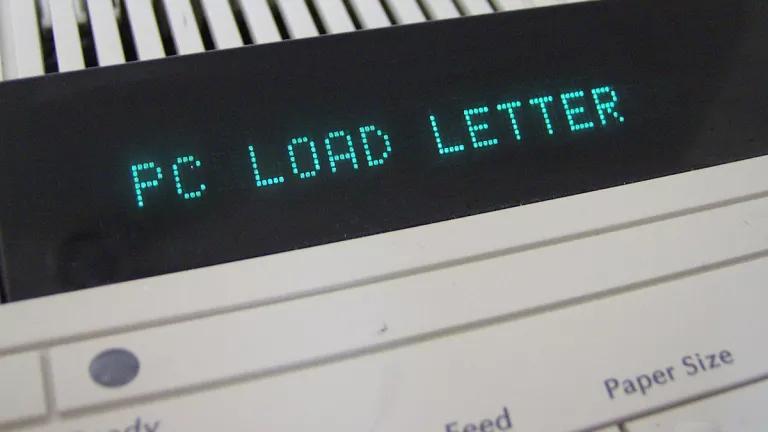High Electric Car Fees in Ohio: Unfair & Counterproductive

The State of Ohio is currently debating a proposal to raise needed road repair funding by imposing an annual registration fee of $200 for electric vehicles and of $100 for hybrids. Such high fees would be bad for Ohio and for Ohioans.
STORY TIME: I once worked at an office that got a new printer. The old printer was terrible; it ate paper, it printed a long vertical line in cyan color in about one-third of the pages, and if you used the feed scanner it would only grab pages in clumps of four instead of, say, scanning every page. We came up with fixes, like scanning pages individually and learning the proper way to smack it when printing to prevent the cyan line from appearing. The office eventually added a new printer, and it was awesome. Everyone would print with the new one and choose not to use the old printer, to the point where people often waited a long time to get their print jobs.
So, naturally, management decided to move the new printer to the far other side of the office so that there would be more incentive to use the old printer and make it more inconvenient to use the new printer (eventually they put it in a senior managers office). Instead of, you know, buying another good printer (which would have been ideal), they just made it harder to get access to the one good printer we had. Man, it would have been nice if they had invested in another good printer, but at least don’t put up obstacles for people that want/need to use the good printer we've got, right?
The transportation plan being debated in Ohio is meant to alleviate the approximately $1 billion gap in road infrastructure funding by raising the gasoline tax by 7 cents a gallon in year one, rising to a total additional 10.7 cents a gallon in 2021. As part of the proposal, an annual registration fee of $200 would be assessed on electric vehicles and of $100 on hybrids. At that dollar amount, the fee is unfair to Ohio drivers and sends the wrong message about the engagement of Ohio with technology and economic innovation.
A better solution to any such static registration fee would be to index the gas tax to both inflation and total fuel consumption, and THEN apply the resulting tax to EVs as annual fees based on their MPGe. This would A) permanently solve the entire transportation funding crisis and B) would result in reasonable fees on EVs in the short term that would gradually increase over time.
1. Higher fees are unjust.
Electric vehicles should contribute to road maintenance, an idea that EV owners support, but $200 per year? That’s a ton of front-loaded cost to buy and register an EV, especially when you consider that 1) EVs pay taxes on their fuel, via the state and municipal taxes on electricity, that gasoline cars don’t pay, and 2) it front-loads the costs to pay for roads you haven’t even driven on yet. That means that if you drive very little, or have good spending habits, you still have to pay the same big ol’ wad of cash in the beginning; it rewards bad behavior the same as good behavior, which doesn’t seem fair.
An average driver in the most fuel-efficient gasoline-only car (12k miles/year, $2.31 per gallon, 50mmg, non-plug in) would pay $79.20 over 365 days between Oct 2019 and Oct 2020, rising to $92.88 over 365 days between Oct 2020 to Oct 2021 using just the gas tax, but the same person under the EV/hybrid fee would pay $100 a year. This is not to mention the electric-only driver, who is now hammered with $200 bucks a year as, what, a penalty for choosing a cleaner car?
This proposal also harms middle- and lower-class drivers who consider an EV, as such fees also make it less affordable to buy a new EV than a gasoline vehicle of the same sticker price, which is sort of like my old managers making it harder to access the new printer/newer technology and incentivizing the older, terrible printer, rather than just letting people pick the better printer if they want to. It would be better if States like Ohio made investments to grant access to the better tech to more people, but at the very least they shouldn't make it harder for more folks to access it.
Under the proposal, EV drivers front the money to the state of Ohio at their registration, while gasoline drivers have their costs spread out over the whole year.
2. The future of the car economy is in carbon-free fuels, and Ohio could be a leader.
There are positive policies in the House bill, including the closing of the infrastructure deficit, investments in transit, etc., but overly-high registration fees that penalize drivers that buy technologically and environmentally advanced cars would be a slide backwards for Ohio.
The US in general, and Ohio in particular, are historically leaders in the manufacture and development of cutting edge motor vehicles, and clean fuel vehicles are the future of cars. We should be doing all we can to encourage the growth of the industry, especially considering the amount of investment and development around EVs that are and will be available. For example, Michigan-based Rivian received $700 million in investments from Amazon to develop their electric trucks and SUVs in their plant in Illinois. Rivian’s plant was formerly a Mitsubishi plant and the expertise of the union members and workers there will now be geared toward making EVs. In Fremont, California, Tesla took over a GM/Toyota plant in 2010, and now that facility employs more people than it ever had before. Those types of investments could be going to Ohio, both in the recently-shuttered Lordstown plant in Warren, OH and in other areas where Ohioans have the expertise and organization to contribute to keeping the US the world leaders in electric vehicles.
Ohio should encourage and grease the wheels (pun intended) for the development of and investment in electric vehicles, as Ohio workers have the knowledge and skills that would be attractive to anyone looking to build electric vehicles and their component parts. Higher fees for alternate, clean-fuel vehicles sends the wrong message to investors and to decision makers, and it would be a shame if the lack of support for the industry leads to factories and jobs going elsewhere in the US.
At any rate, the old printer was so bad I’m sure it existed just as a way to subsidize the toner cartridge refill company. Which, now that I think about it, may been a pretty darn good analogy by itself.



